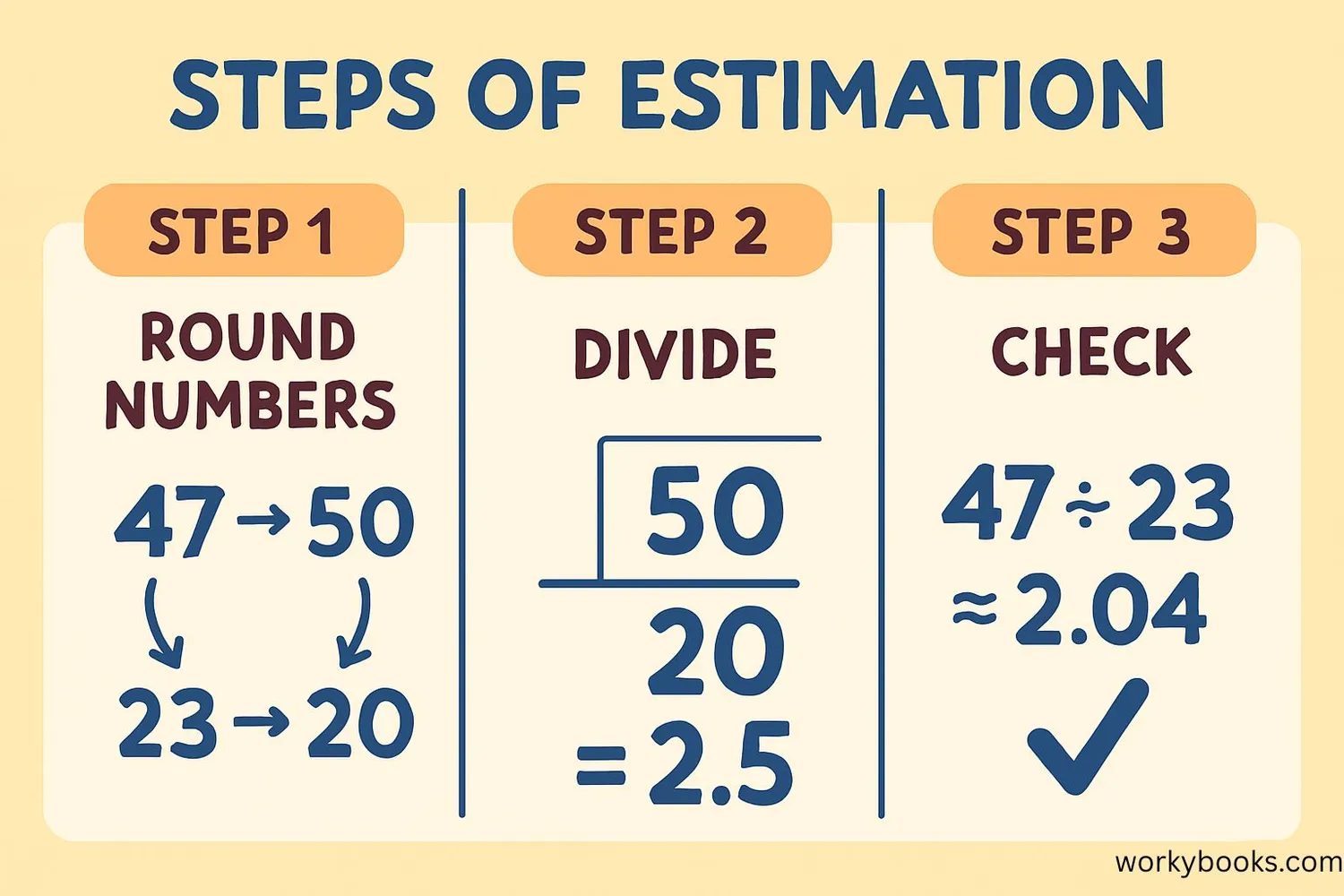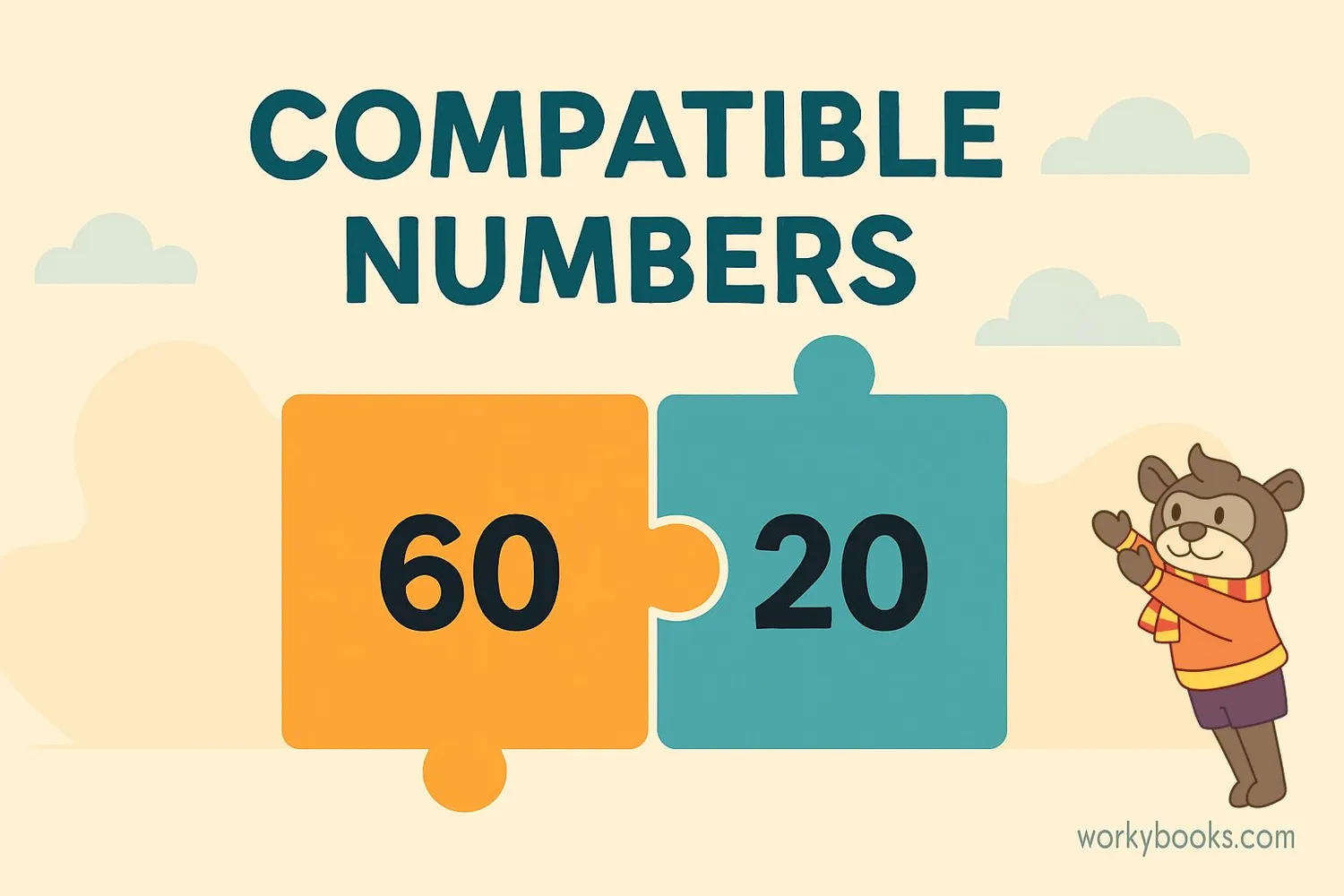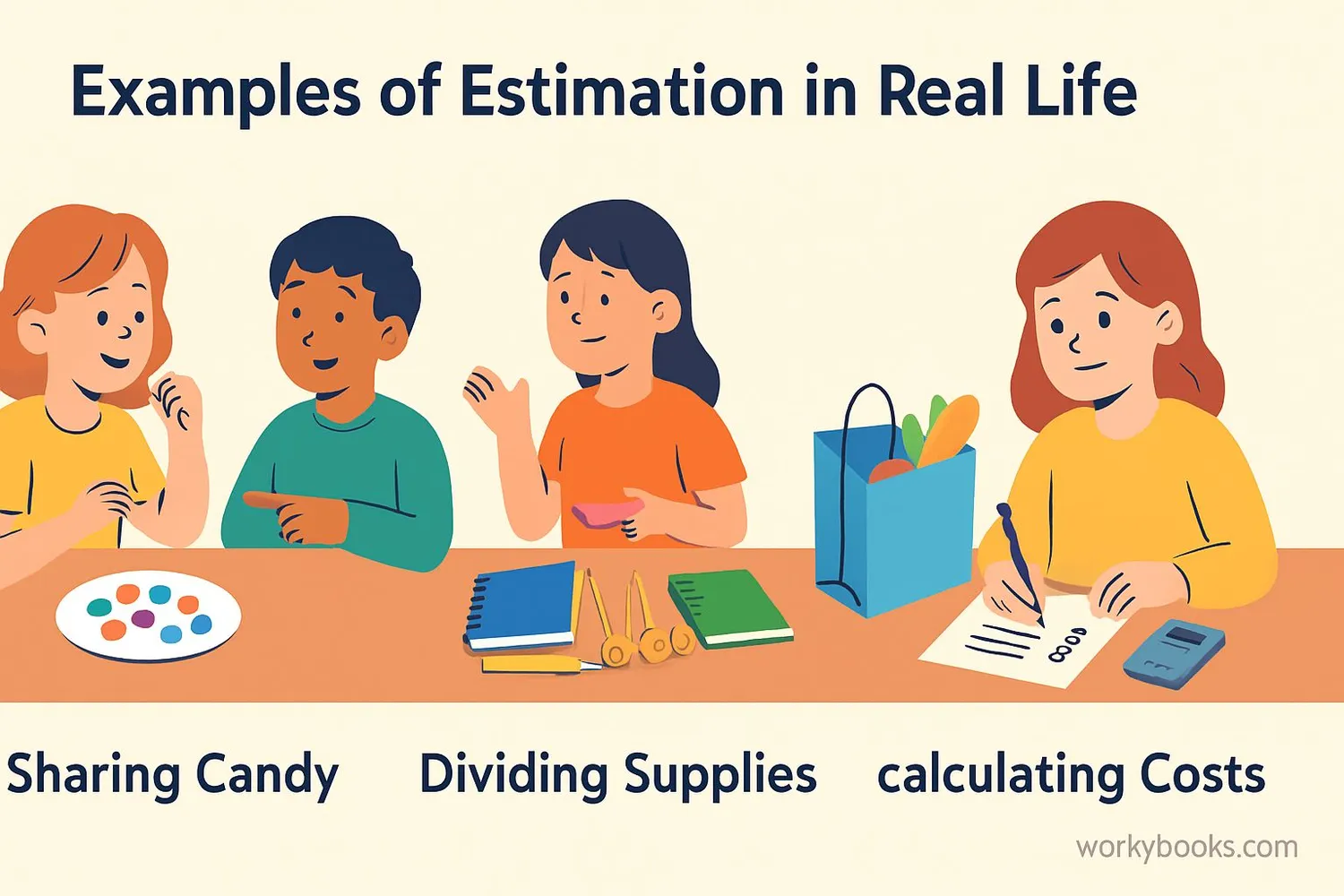Estimating Quotients - Definition, Examples, Quiz, FAQ, Trivia
Learn smart division estimation techniques with easy explanations and practice activities
What is Estimating Quotients?

Estimating quotients means finding an approximate answer to a division problem without calculating the exact result. It's a smart math strategy that helps you:
1. Quickly check if your exact answer makes sense
2. Solve problems faster when you don't need an exact number
3. Make good decisions in real-life situations
Think of estimation as your math superpower - it helps you get close to the right answer without doing all the hard work!
When we estimate quotients, we use rounding to make numbers easier to work with. For example, instead of dividing 247 by 32, we might round to 250 ÷ 30 to get an approximate answer.
Key Concept
Estimation gives us a "close enough" answer that helps us understand the size of the real answer.
How to Estimate Quotients

Estimating quotients is a simple three-step process:
Round the Numbers
Round the dividend and divisor to numbers that are easier to divide.
Divide the Rounded Numbers
Divide the rounded numbers using mental math or simple division.
Adjust if Needed
Check if your estimate makes sense. Is it close to the exact answer?
Example: Estimate 247 ÷ 32
Estimation Tip
When rounding, try to make the dividend divisible by the divisor. For example, round 247 to 240 (divisible by 30) for a closer estimate: 240 ÷ 30 = 8.
Using Compatible Numbers

Compatible numbers are pairs of numbers that are easy to divide mentally. They make estimation faster and more accurate!
Compatible numbers are close to the original numbers but form division problems that are easy to solve. For example, 250 and 50 are compatible because 250 ÷ 50 = 5.
How to Find Compatible Numbers
- Look for numbers that divide evenly
- Use basic division facts (like 240 ÷ 40)
- Adjust both numbers by similar amounts
- Keep the relationship similar to the original
Examples
- Original: 142 ÷ 34
- Compatible: 140 ÷ 35 = 4
- Original: 389 ÷ 52
- Compatible: 400 ÷ 50 = 8
- Original: 723 ÷ 81
- Compatible: 720 ÷ 80 = 9
Remember
When using compatible numbers, try to change both the dividend and divisor by the same relative amount.
Real-World Examples

Let's practice estimation with real-world examples:
Example 1: Sarah has 347 stickers to share equally with 58 friends. About how many stickers will each get?
Solution: Round 347 to 350 and 58 to 60. 350 ÷ 60 ≈ 5.83. Each friend gets about 6 stickers.
Example 2: A school needs to transport 428 students using buses that hold 62 students each. About how many buses are needed?
Solution: Use compatible numbers: 420 ÷ 60 = 7. They'll need about 7 buses.
Example 3: Estimate 593 ÷ 71
Solution: Round to 600 ÷ 70 ≈ 8.57. The estimate is about 8.6 (exact is 8.35).
Example 4: The cafeteria has 835 cookies to pack into containers of 24. About how many containers are needed?
Solution: Use compatible numbers: 840 ÷ 20 = 42. They'll need about 42 containers.
Why Estimation Matters
Estimation helps you catch mistakes. If your exact answer isn't close to your estimate, you know to check your work!
Estimation Practice Quiz
Test your estimation skills with this 5-question quiz. Choose the best estimate for each problem.
Frequently Asked Questions
Here are answers to common questions about estimating quotients:
Math Trivia
Discover interesting facts about estimation and mathematics:
Ancient Estimation
The ancient Egyptians used estimation techniques to build the pyramids with remarkable precision. Their methods allowed them to calculate volumes and angles without modern tools.
Estimation in Science
Scientists use estimation every day. Astronomers estimate distances between stars, biologists estimate populations, and physicists estimate particle behaviors. Estimation is at the heart of scientific discovery!
Mental Math Champions
World record holders in mental math use estimation techniques to solve complex problems quickly. The current record for mental division of two 10-digit numbers is just 12.8 seconds!
Computers Use Estimation
Your computer and phone constantly use estimation to save processing power. Graphics, sound processing, and even internet data transfer rely on smart estimation algorithms.





